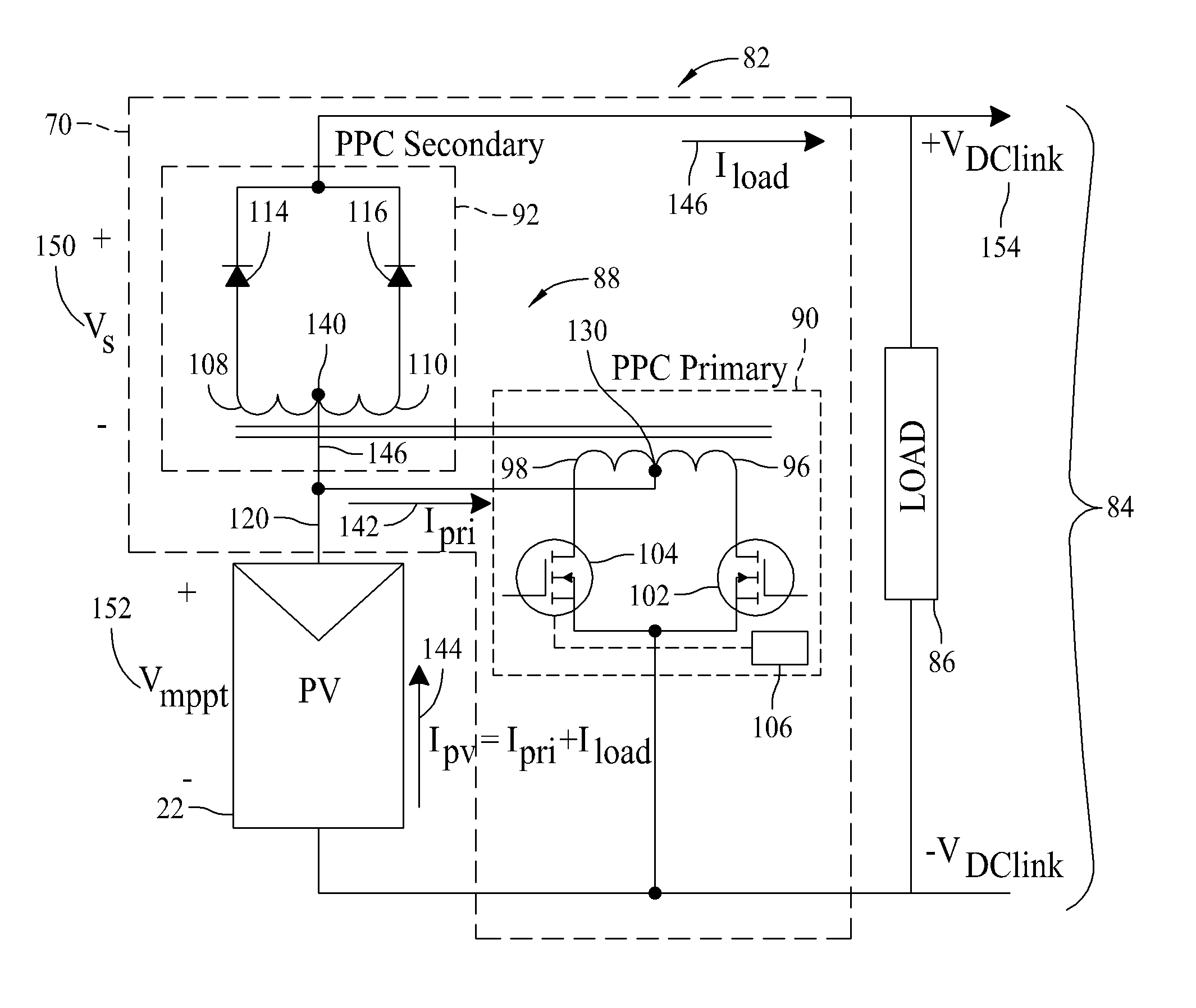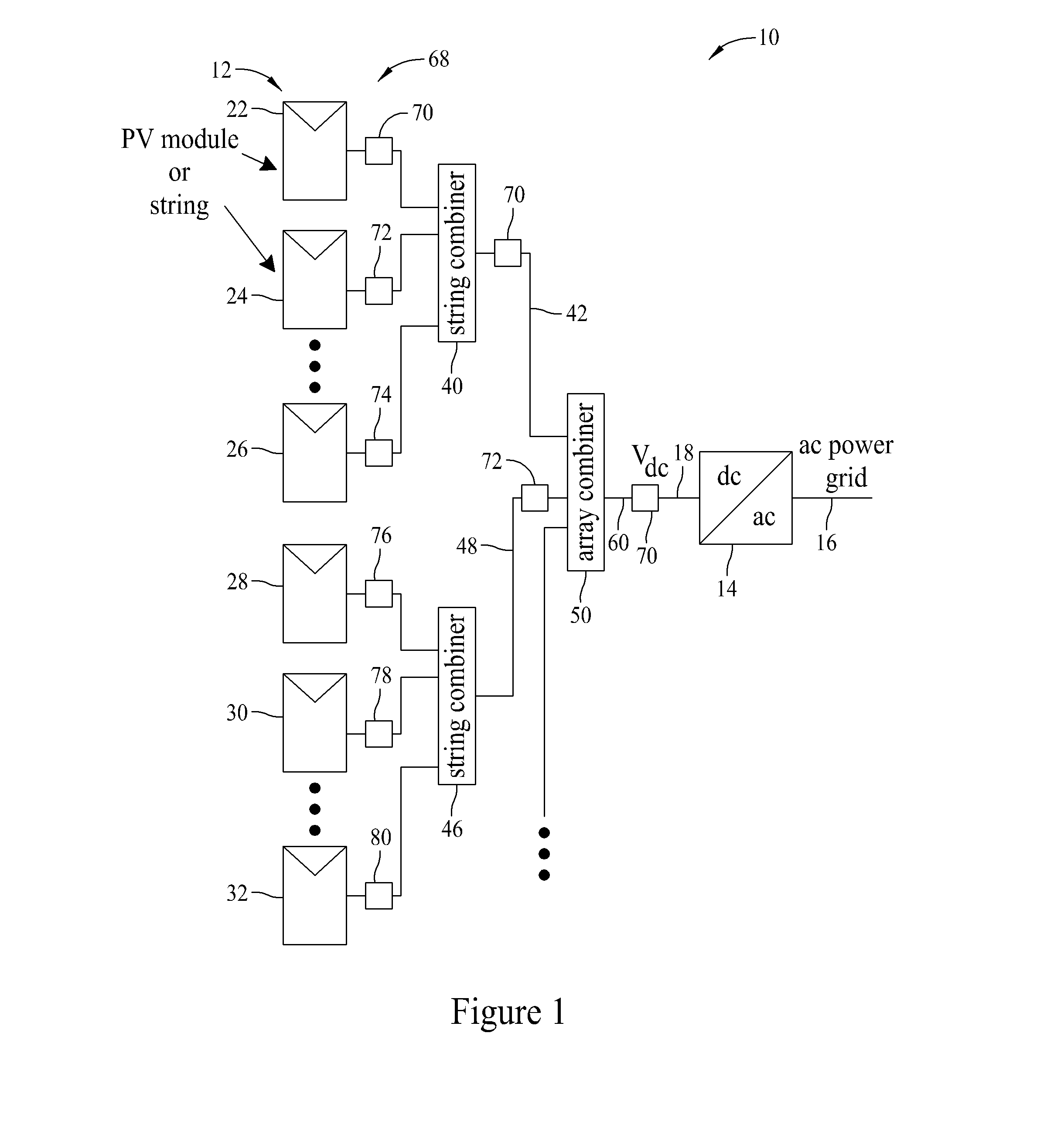DC to DC power converters and methods of controlling the same
a technology of power converter, which is applied in the direction of switch power arrangement, contact mechanism, instruments, etc., can solve the problems of pv power generation system that includes a full-power dc to dc converter, relative high cost and high weight solution, and achieve efficiency compounding
- Summary
- Abstract
- Description
- Claims
- Application Information
AI Technical Summary
Benefits of technology
Problems solved by technology
Method used
Image
Examples
embodiment 282
[0038]FIG. 7 is a circuit diagram 280 of a first alternative embodiment 282 of DC to DC converter 70 (shown in FIG. 1). In the first alternative embodiment, DC to DC converter 282 includes a flyback converter configuration. DC to DC converter 282 includes a single transistor 284, a transformer 286, a first capacitor 288, a second capacitor 290, and a rectifying diode 291. Operation of the flyback converter is substantially similar to operation of the push-pull-type converter (shown in FIG. 2). The multiple transistors 102 and 104 included within DC to DC converter 70 enable its use in higher power applications than the flyback converter. However, the lower number of transistors included within the flyback converter provides a lower cost solution, suitable for lower power applications, when compared to the push-pull-type converter. For example, the power output of PV units 22, 24, 26, 28, 30, and 32 of the plurality of PV units 12 (all shown in FIG. 1) may be applied to DC to DC conv...
embodiment 402
[0043]FIG. 11 is a circuit diagram 400 of a fifth alternative embodiment 402 of DC to DC converter 70 (shown in FIG. 1). In the fifth alternative embodiment, DC to DC converter 402 includes a partial power processing buck-boost configuration. Input section 90 of DC to DC converter 402 includes a switch, for example, a transistor 403, an inductor 404, and an input capacitor 405. Output section 92 of DC to DC converter 402 includes an output capacitor 406 and may include a diode 408. DC to DC converter 402 does not include a transformer or an output rectifier. Rather, input section 90 is directly coupled (i.e., not mutual-inductively coupled) to output section 92. Therefore, DC to DC converter 402 is suitable for use in medium to high power applications.
[0044]An output voltage (i.e., VDClink 154) of DC to DC converter 402 equals a sum of an input voltage (i.e., PV array voltage 152, Vmppt) and a voltage across output capacitor 406 (i.e., Vs 150). VDClink 154 is dependent upon a duty r...
PUM
 Login to View More
Login to View More Abstract
Description
Claims
Application Information
 Login to View More
Login to View More - R&D
- Intellectual Property
- Life Sciences
- Materials
- Tech Scout
- Unparalleled Data Quality
- Higher Quality Content
- 60% Fewer Hallucinations
Browse by: Latest US Patents, China's latest patents, Technical Efficacy Thesaurus, Application Domain, Technology Topic, Popular Technical Reports.
© 2025 PatSnap. All rights reserved.Legal|Privacy policy|Modern Slavery Act Transparency Statement|Sitemap|About US| Contact US: help@patsnap.com



